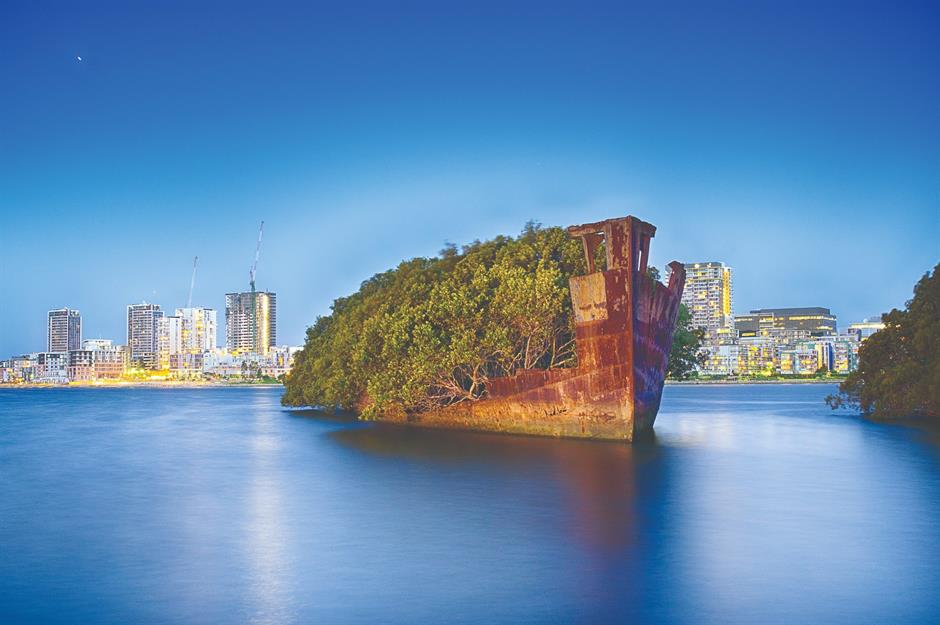Abandoned First World War places the world forgot
War-torn wonders
From crumbling fortresses and mountain battlefields to rusty gun emplacements and skeletal ships, there are ghostly reminders from The Great War scattered all over the world. With the help of new book Abandoned Places of World War I by Neil Faulkner, here we uncover the secrets and stories from some of the most incredible abandoned First World War sights through a jaw-dropping selection of images.
Monte Pasubio, Trentino, Italy
Edegem Fortress, Antwerp, Belgium
Edegem Fortress, Antwerp, Belgium
Edegem Fortress was one of several forts known collectively as the ‘Big Rampart’ that served as Antwerp’s main line of resistance and protection during the First World War in 1914.
Love this? Follow our Facebook page for more travel inspiration
Machine gun pillbox, Norfolk, England
Fort Hermann, Bovec, Slovenia
SS Heroic, Sydney, New South Wales, Australia
This steel-hulled steamboat tug was originally built in Newcastle, England for Thomas Fenwick, a Sydney-based tugboat operator. The ship was used by the Royal Navy during the First and Second World Wars for rescue services off the Scilly Isles before it was sold for scrap metal in the 1970s.
Discover these stunning photos of the world’s most spectacular shipwrecks
Monte Cengio, Trentino, Italy
Fort Mississauga, Ontario, Canada
Sitting at the mouth of the Niagara River in Canada, Fort Mississauga was constructed during the War of 1812 between the United States and Great Britain. The fort features a box-shaped brick tower and historic star-shaped earthworks, which is the only one of its kind in Canada. Like most abandoned fortifications, during the First World War Fort Mississauga was reused for military training.
Przemysl Fortress, Poland
Often regarded as one of the largest permanent fortifications in Europe, this Austro-Hungarian fort complex can be found in Poland sprawled across the approaches of the Carpathian Mountains. In 1914 Przemysl Fortress had three lines of defence, its outer ring had a circumference of around 28 miles (45km) with 17 main forts while the inner defensive system contained 21 forts. During the Russian attack in September 1914, the Przemysl Fortress was manned by nearly 130,000 soldiers. In March 1915, after 180 days, the men finally surrendered to Russia due to starvation.
Mount Maggio, Trentino, Italy
Searchlight emplacement, Blyth Battery, England
Nestled on England’s Northumberland coastline, these east coast defences were built in 1916 to defend the country against German naval attacks. Designed by the Durham Fortress Engineers RE, Blyth Battery featured two searchlights and two six-inch (15cm) quick-firing guns which were operated by around 80 men. Since then, Blyth Battery has been transformed into a war museum run by volunteers.
Sanctuary Wood, Ypres, Belgium
Sitting on a hilltop overlooking the Belgian city of Ypres, Sanctuary Wood is an incredibly well-preserved series of trenches. After the First World War ended in 1918, a local farmer and his family returned to their land which had been ravaged by warfare and decided to preserve the trenches left behind. Today, with its tangled mess of barbed wire, shell-holes and splintered trees, Sanctuary Wood is an eerie reminder of the horrors of war and a popular tourist attraction. In recent years, a museum has been added to the site and it remains one of the best places in the world to explore a First World War trench system.
Trenches and fortifications, Cinque Torri, Dolomites, Italy
Trenches and fortifications, Cinque Torri, Dolomites, Italy
Within the striking rock formation, there was a network of machine-gun emplacements, trenches, observation posts and military housing. Today, the trenches have been partially reconstructed, restored and opened to the public as a fascinating open-air museum.
Gun emplacement, Mount Možic, Slovenia
Kaunas Fortress, Lithuania
Carpathian Mountains, Europe
Fort 48 Batowice, Kraków, Poland
Ammunition, Gallipoli, Turkey
Pictured here is a collection of used Mauser cartridges from the Gallipoli peninsula in Turkey. During the First World War, the German Mauser Gewehr 98 was the standard rifle used by the Ottoman infantry.
Artillery emplacement, Mount Zovetto, Italy
SS Ayrfield, Sydney, New South Wales, Australia
In the heart of Sydney's Homebush Bay, this abandoned cargo ship is a spooky sight. Built in England in 1911, the SS Ayrfield ran coal between Newcastle and Sydney before it was used as a transport ship for Australia during the Second World War. In the 1970s, the ship was finally decommissioned after decades of service. Today, its rusty decaying remains have been taken over by greenery, earning it the nickname the ‘Floating Forest’ and is one of Sydney’s most unique attractions.
Find out more
All images were taken with permission from the book Abandoned Places of World War I by Neil Faulkner published by Amber Books Ltd, and available to buy on Amazon.

